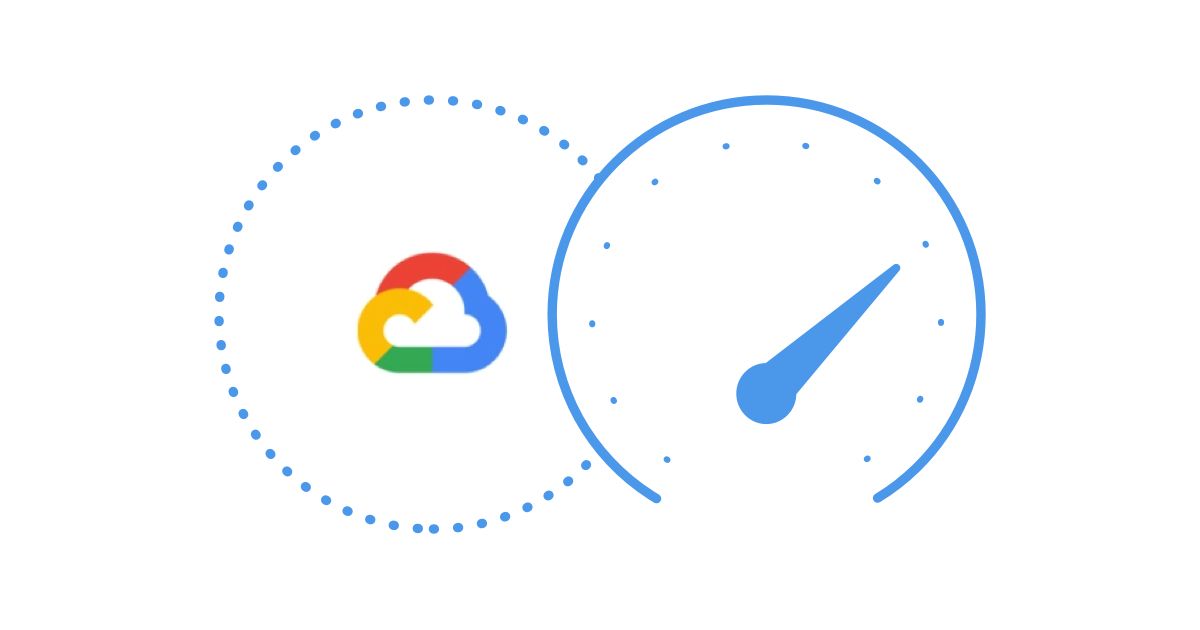Table of Contents
Table of Contents
Welcome to the exciting world of cloud computing, where everything is digital and the skies are always clear...or are they? With so many connections in the cloud, it's easy to get lost in a digital haze. That's where Azure Network Monitoring comes in!
By keeping a watchful eye on your cloud connections, you can ensure that your data travels smoothly and your cloud experience remains crystal clear. So, let's dive deep into the world of Azure Network Monitoring and learn how to keep your cloud connections clear and your data flowing like a gentle breeze on a sunny day!
Microsoft Azure is a cloud computing platform and service offered by Microsoft. It provides a wide range of cloud-based services, including computing, storage, analytics, and networking, among others.
Azure is designed to help businesses and organizations build, deploy, and manage applications and services in the cloud, with the goal of improving efficiency, scalability, and reliability. The platform supports a variety of programming languages, operating systems, frameworks, and tools, making it a flexible and adaptable solution for a wide range of use cases.
With Azure, users can access their applications and data from anywhere, at any time, and from any device, while also benefiting from the security and reliability features offered by Microsoft's extensive network of data centers around the world.


Picture a beautiful day in the Azure cloud. Everything is running smoothly, and your applications and data are within reach. But wait, what's that looming in the distance? Poor network performance can quickly darken the skies and rain on your cloud parade.
As a cloud computing platform, Azure relies heavily on network connectivity to enable users to access and interact with their applications and data. When network performance is poor, users may experience slow response times, increased latency, and even downtime, which can take a toll on the overall user experience and result in lost revenue for businesses.
That's why keeping a watchful eye on network performance is crucial for maintaining the sunny skies and optimal performance of your Azure cloud with Cloud Network Monitoring.
In Azure, network performance can affect several areas, including:
- Virtual Machine (VM) performance: VMs in Azure rely on network connectivity to communicate with other VMs and services, access data, and perform tasks. Slow or unreliable network connections can result in slow VM performance, leading to slower application response times and reduced productivity.
- Data transfer speeds: Azure supports large-scale data transfer between different services and locations. Slow network connections can result in longer transfer times, which can impact the overall performance of data-intensive applications.
- Availability and uptime: Azure services are designed to be highly available and resilient, but network issues can lead to service disruptions and downtime. This can impact the availability and reliability of applications and data and may result in lost revenue or productivity.
Keep your cloud connections clear and your data flowing like a gentle breeze on a sunny day! Don't let anything hold you back from achieving network excellence - sign up for Obkio's network performance monitoring tool now and let Obkio guide you towards optimized Azure network performance.

- 14-day free trial of all premium features
- Deploy in just 10 minutes
- Monitor performance in all key network locations
- Measure real-time network metrics
- Identify and troubleshoot live network problems

Are you ready to take your Azure cloud experience to the next level? Azure network monitoring might just be the key to unlocking the full potential of your cloud-based applications and services. So why settle for cloudy skies and unreliable network performance? Let's explore the benefits of Azure network monitoring and bring some sunshine to your cloud experience!
There are several benefits of Azure network monitoring that can help businesses optimize the performance, security, and reliability of their cloud-based applications and services. Here are some of the key benefits:
- Improved network visibility: Azure network monitoring provides real-time visibility into network performance and traffic, allowing businesses to identify and diagnose issues quickly and effectively.
- Enhanced security: By monitoring network traffic and identifying potential security threats, Azure network monitoring helps businesses proactively prevent security breaches and safeguard their data.
- Optimized performance: Azure network monitoring allows businesses to identify network bottlenecks, optimize traffic flow, and adjust configurations to improve performance and reduce latency.
- Increased uptime and availability: By monitoring network performance and identifying issues before they escalate, Azure network monitoring helps businesses ensure high network availability and uptime for their applications and services.
- Greater control and flexibility: Azure network monitoring provides businesses with greater control and flexibility over their network configurations, enabling them to adjust and optimize network settings to meet changing business needs and demands.
Overall, Azure network monitoring helps businesses maximize the value and performance of their cloud-based applications and services by providing the visibility, security, and control they need to ensure optimal network performance and reliability.
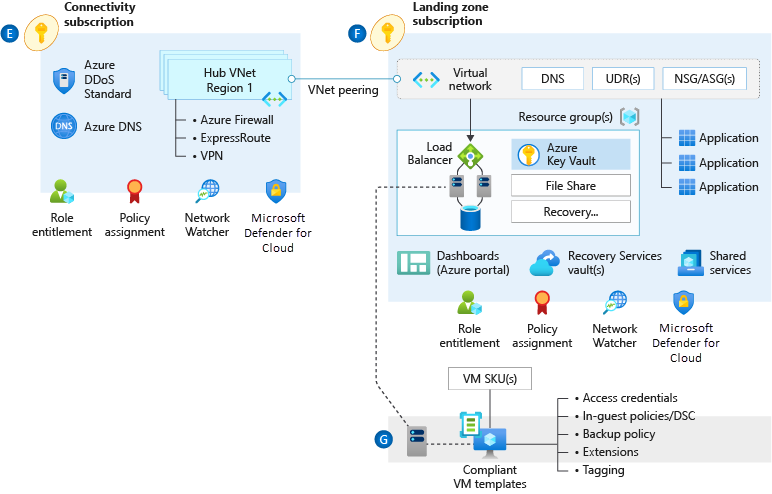
There are several tools available for Azure network monitoring, each with its own unique features and capabilities. The tool you choose will depend on your business needs and available resources, and how much of your network you really want to monitor.
Some of the available tools only monitor Microsft Azure, while other more complete network monitoring tools can monitor Azure as well as the rest of your network infrastructure.
Some of the most popular tools for Azure network monitoring include:
- Obkio: Obkio is a network performance monitoring tool that offers real-time visibility into network performance and traffic. It provides advanced analytics and diagnostics to help businesses identify and resolve network issues quickly and efficiently.
- Azure Network Watcher: This is a built-in Azure service that provides tools for monitoring network traffic, diagnosing issues, and analyzing network security. It offers features such as packet capture, flow logging, and connectivity testing.
- Azure Traffic Manager: This service allows businesses to route traffic to different endpoints based on performance, geographic location, and other factors. It provides monitoring and reporting features to help businesses optimize traffic flow and ensure high availability.
- Azure Application Gateway: This is a web traffic load balancer that provides application-level routing and SSL termination. It offers monitoring and logging features to help businesses optimize performance and troubleshoot issues.
These Azure monitoring tools, among others, provide businesses with the visibility, security, and control they need to optimize their Azure network performance and ensure high availability and uptime. By leveraging the right tools for their specific needs and requirements, businesses can maximize the value and performance of their cloud-based applications and services.
Attention all cloud spies! Your mission, should you choose to accept it, is to keep your Azure network connections clear and optimize your cloud-based applications for peak performance. But fear not, because Obkio is here to help. With just a few clicks, you can set up your very own Azure network monitoring solution and keep a watchful eye on your network performance in real-time.
Think of Obkio as your trusty partner-in-crime, helping you to uncover any potential network bottlenecks and optimize traffic flow for maximum performance. No more flying blind in the Azure cloud - with Obkio's network performance insights, you'll have the tools you need to stay one step ahead of the game.
So, are you ready to embark on your top-secret mission of keeping your cloud connections clear? Let's get started and make sure your Azure network is always performing at its best!
Are you tired of dealing with the hassle of monitoring your Azure network performance? Let Obkio Network Performance Monitoring take the weight off your shoulders.
While we've already gone over a few monitoring tools above, none are as easy or comprehensive as Obkio. It continuously monitors your end-to-end network performance and alerts you to any Azure network issues as soon as they arise.
With Obkio's cloud network monitoring features, you can rest easy knowing that you have a reliable Azure network monitor at your fingertips. So why stress about network performance when you can let Obkio guide you through the ever-changing landscape of the cloud?
By partnering with Obkio, you can navigate the cloud with ease and stay one step ahead of any potential network issues. So sit back, relax, and let Obkio handle the heavy lifting of monitoring your Azure network performance.

Keeping an eye on every aspect of your network is crucial when it comes to monitoring network performance. It's like being a seasoned network spy, always on the lookout for any potential issues across the WAN, LAN, or network devices.
This is where the Network Monitoring Agents come in handy. Obkio's Monitoring Agents are strategically deployed at key network locations, continuously monitoring performance between them.
When setting up Azure network monitoring, it's important to monitor network performance between the Microsoft Azure Cloud and your on-premise infrastructure. To achieve this, you'll need to deploy at least two Monitoring Agents: one within the Azure Cloud and another within your on-premise infrastructure.
- Azure Monitoring Agent: The Azure Monitoring Agent is hosted and maintained by Obkio in the Microsoft Azure cloud infrastructure. It allows you to proactively monitor network performance between your local network to the Microsoft Azure network. They provide complete and continuous visibility so you can easily identify the source and cause of Azure network issues impacting your network performance.
- On-Premise Agent: These Monitoring Agents are deployed in your local network, in key network locations like your head office, branch office, data centers and network devices. They allow you to monitor network performance from your end up to Microsoft Azure. We recommend the Software (Linux, Windows, Docker) agent that can be installed on your favourite Linux distribution, including Amazon Linux and Amazon Linux 2.
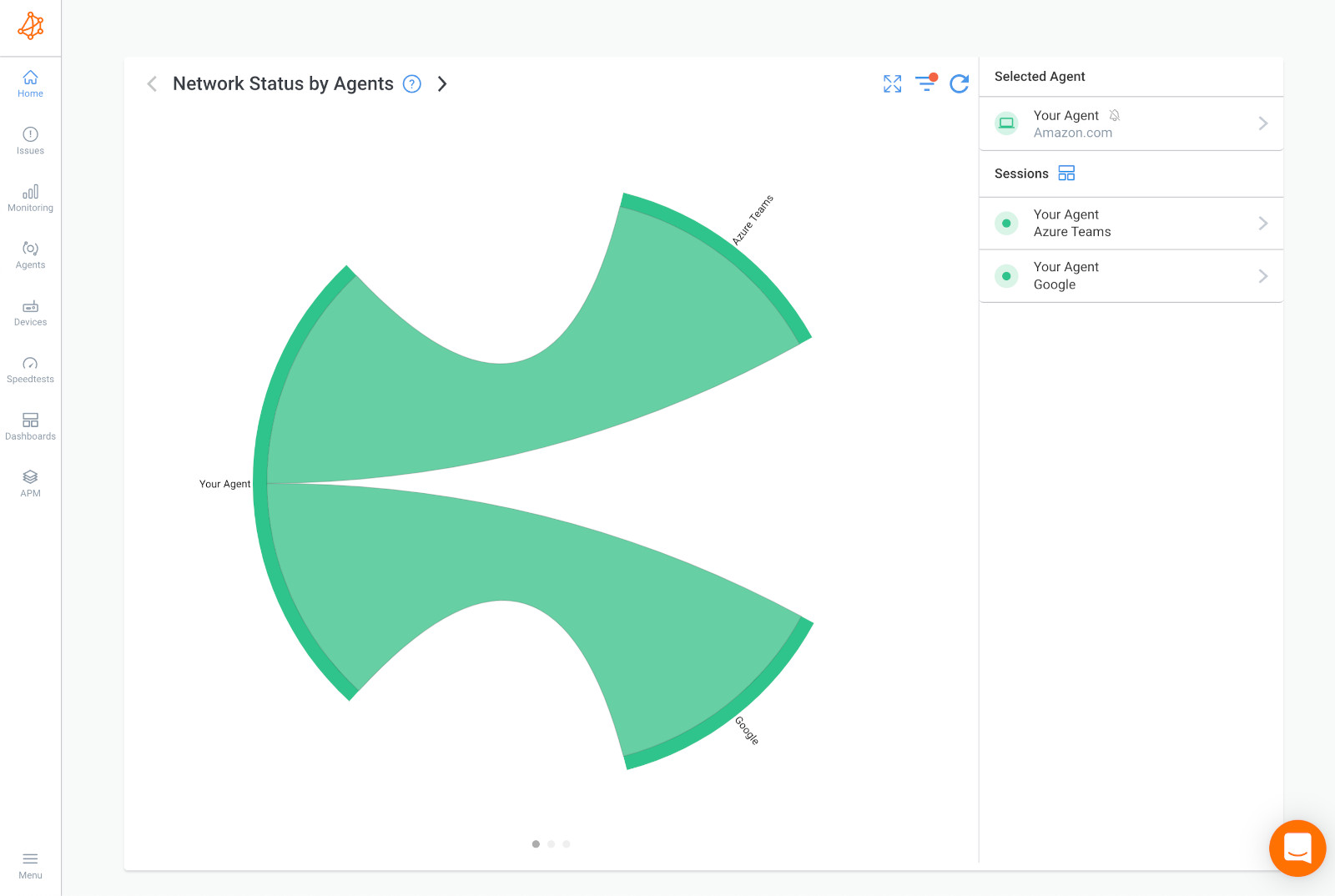
P.S. You can also use the Microsoft Azure Monitoring Agent to monitor:
Once the Monitoring Agents are installed, you're almost done! Two configurations are required in the App:
- The agents must be in the same Network. When two agents are in the same Network, they will communicate using private IPs instead of Public IPs.
- A Network Monitoring Template must be configured to create the network performance monitoring session.
Once the Monitoring Agents are deployed and configured, they will begin exchanging synthetic UDP traffic every 500ms to continuously measure Azure network performance. This is when the real monitoring happens!
To get a comprehensive view of your Azure network performance, it's important to monitor different parts of your Azure infrastructure. Here are some of the key areas you should monitor with Azure network monitoring:
- Virtual Machines (VMs): Monitor the network traffic flowing to and from your VMs to identify any issues or bottlenecks in network performance.
- Virtual Networks (VNETs): Monitor the traffic within and between VNETs to identify any connectivity or performance issues.
- Network Security Groups (NSGs): Monitor NSGs to ensure that traffic is properly secured and that there are no unwanted connections or security breaches.
- Azure Load Balancers: Monitor load balancers to ensure they are functioning properly and distributing traffic evenly across resources.
- Azure Application Gateway: Monitor application gateways to ensure they are routing traffic correctly and that the web applications are performing as expected.
- ExpressRoute: Monitor the performance of your ExpressRoute circuit to ensure that it is providing the necessary bandwidth and latency for your applications. Learn more about Azure ExpressRoute monitoring here.
By monitoring these components, you can quickly identify and resolve any network issues that may arise, ensuring that your Azure network is performing at its best.

Voila! That's all there is to it. Your trusty agents will now be sending packets to each other every 500ms to measure Azure network metrics. This will give you an overview of your network performance and help you identify any issues that might be affecting your Azure service.
- Latency: Latency refers to the time it takes for a packet of data to travel from one point in the network to another. High latency can cause slow response times and negatively impact the user experience.
- Bandwidth utilization: This metric measures the amount of network traffic in use at any given time. Monitoring bandwidth utilization can help you identify potential bottlenecks and ensure that you have enough capacity to support your network traffic.
- Packet Loss: Packet Loss refers to the percentage of packets that are lost or dropped during transmission. Monitoring packet loss can help you identify network issues that may be impacting performance.
- Network topology: Understanding the topology of your network is essential for monitoring and troubleshooting network issues. A clear view of your network topology will help you identify potential problem areas and ensure that your network is properly configured.
- DNS resolution: DNS resolution metrics track the time it takes for DNS queries to be resolved. Monitoring DNS resolution times can help you identify issues with DNS servers or misconfigured DNS settings.
With the help of Obkio's monitoring tools, tracking these metrics can help you anticipate and avoid potential network issues, ensuring that your Azure services are always functioning at their best. So keep an eye on these metrics, and trust Obkio to lead the way toward maintaining optimal performance for your Azure network.
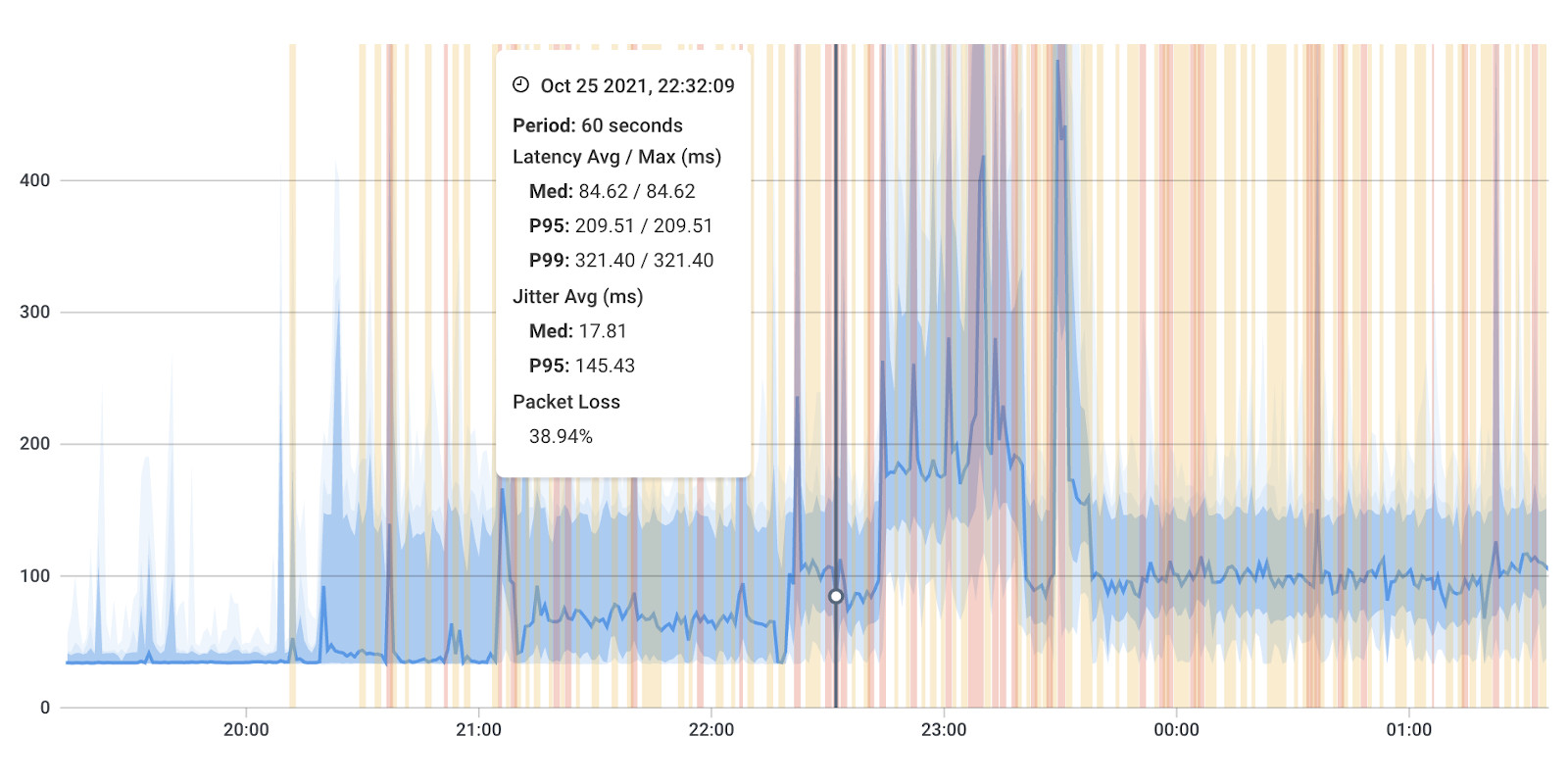
It's important to remember that keeping tabs on your network devices is an essential aspect of Azure network monitoring. These devices - including routers, switches, and firewalls - serve as the foundation of your network and can play a significant role in the performance of your Azure services. So, don't overlook the importance of monitoring these critical components in your Azure network monitoring strategy.
Thankfully, Obkio has got your back with the Network Device Monitoring feature! Using Ultra-Fast Polling (every 30 seconds), Obkio can keep a close eye on your network devices and provide you with results that are far more accurate than the traditional software polling, which only occurs every 5 minutes. With this feature, you can rest easy knowing that your network devices are being monitored around the clock and any issues will be detected in a flash.
To ensure optimal AWS network performance, it's important to monitor various network devices that are part of your network infrastructure, such as:
- Routers
- Switches
- Firewalls
- Load balancers
- DNS servers
These devices play a significant role in directing traffic between your cloud resources and end-users and monitoring their performance can help you quickly identify and resolve any issues that may arise. So, let Obkio's Network Device Monitoring feature be your trusty lookout, keeping your Azure network performance as clear as a sunny day!
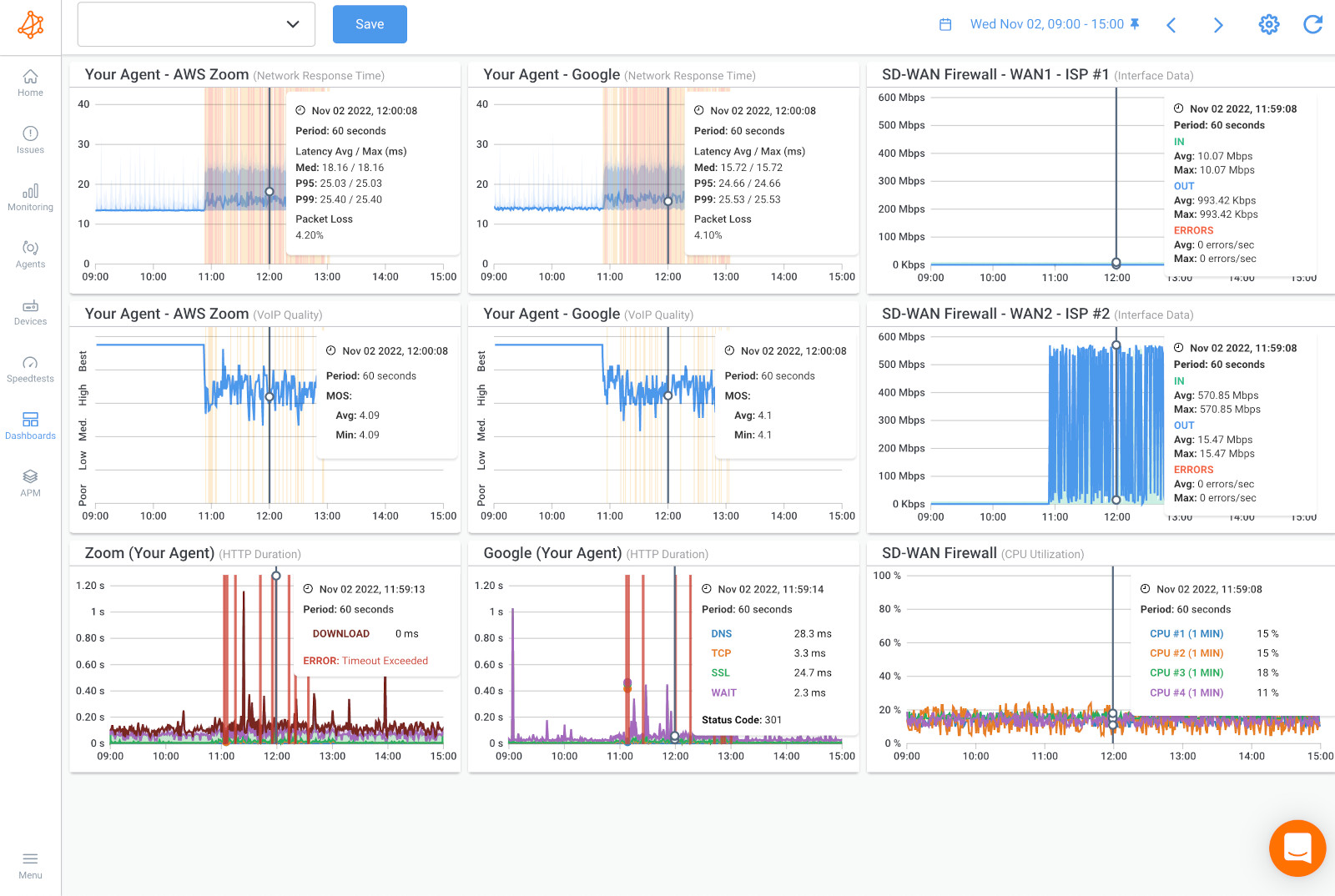
Now that you have set up Azure network monitoring with Obkio, you can rest assured that your cloud connections will remain clear and uninterrupted. With Obkio's continuous monitoring, you will be alerted to any network outages in just a few seconds, giving you the power to take immediate action and prevent any disruptions.
Obkio's time-travelling capabilities allow you to access historical network performance data, so you can analyze past issues and make informed decisions to improve your cloud connections in the future. It's like having a crystal-clear lens into your cloud network's past and present!
With Obkio on your side, you can stay ahead of any potential network issues and maintain optimal Azure network performance. So, let's keep those cloud connections clear and start optimizing your network with Obkio!
- Obkio's Traceroutes are also executed periodically in both directions to identify hop-by-hop issues and to keep track of the historical latency between hops.
- Schedule speed tests between the agents to monitor network speed and test the available throughput on the connection between the on-premise infrastructure and the AWS Cloud.
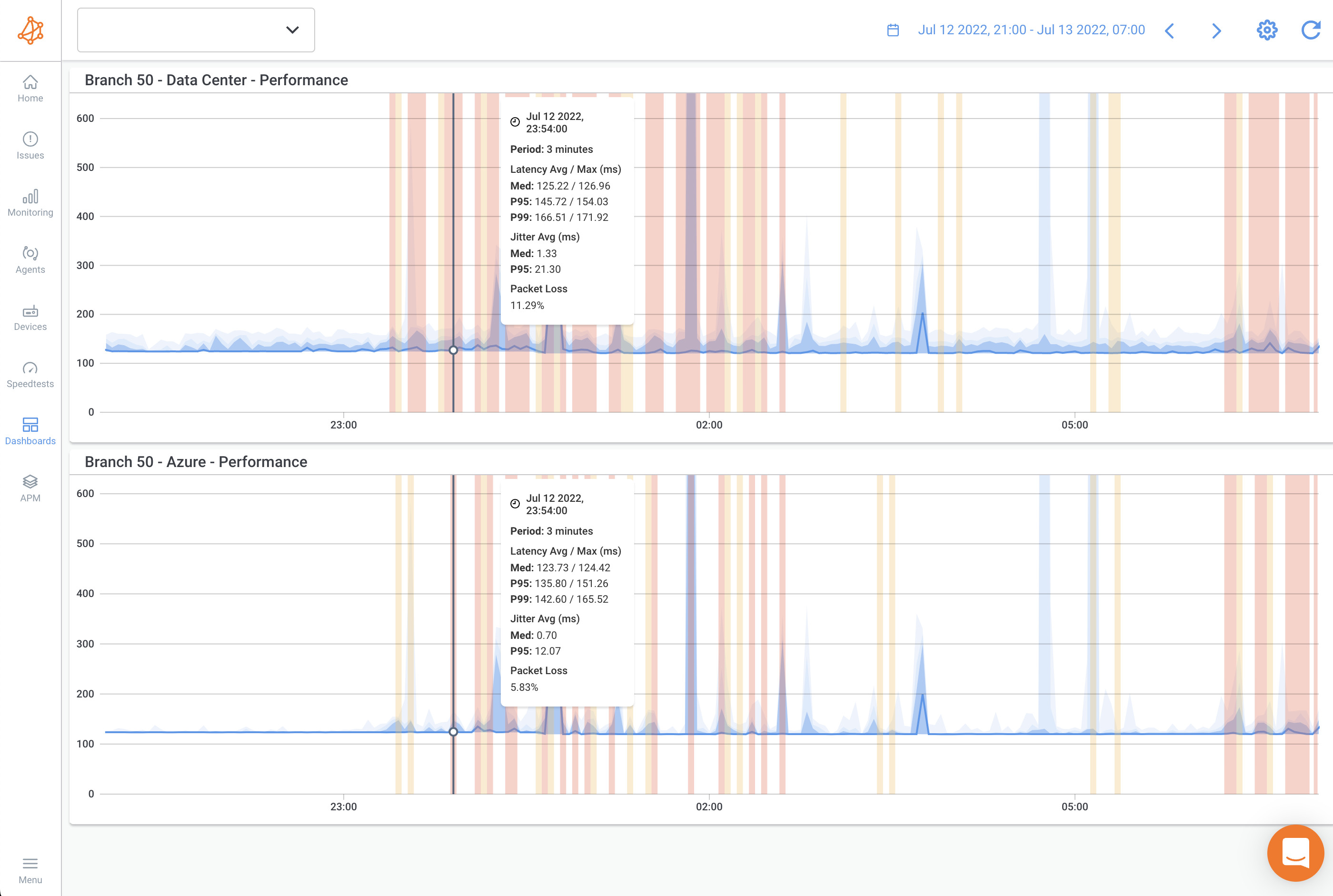
With all these features, it'll be much easier to identify and troubleshoot network issues. But what are some of the most common network issues affecting Azure network performance? Let's go through them.
- Network congestion: When there is heavy traffic on the network, it can cause network congestion, leading to slow performance and even downtime.
- Latency: Latency is the delay in the time it takes for data to travel between its source and destination. High latency can lead to slow response times and poor application performance.
- Packet loss: When data packets are lost during transmission, it can cause packet loss and lead to poor network performance and even complete connection loss.
- Network misconfiguration: Incorrectly configured network settings can cause network performance issues, such as routing problems or bandwidth limitations.
- Security issues: Network security breaches can lead to compromised network performance, as well as data loss and other security issues.
- Software or hardware issues: Faulty hardware or software can cause network performance issues, leading to slow response times, application crashes, and even system downtime.
By keeping an eye on these common Azure network performance issues using tools such as Obkio Network Performance Monitoring, you can swiftly identify and troubleshoot them, ensuring uninterrupted network performance and a seamless user experience.
So take a deep breath, and let Obkio accompany you as your trusted guide while you navigate the complex terrain of Azure network monitoring. With Obkio's network performance insights, you can detect and remedy any issues before they compromise your mission.


Network performance plays a critical role in the overall performance and availability of Microsoft Azure’s services. Poor network performance can lead to slow application response times, increased latency, packet loss, and network outages, all of which can negatively impact user experience and business operations.
If your local network performance is affecting Azure, Obkio will help you uncover that!
Poor network performance can result in slow loading times, delayed responses, and even service outages, affecting the user experience and productivity. It can also impact the performance of other applications running on the same network and cause data loss or corruption.
In addition, network performance can also impact the cost of using Azure services, as slower performance may require more resources and increase the overall usage cost. Therefore, monitoring and maintaining optimal network performance is essential for the success of any Azure deployment.
Let's say you have a web application hosted on Microsoft Azure that serves thousands of users every day. The web application consists of various components, including a front-end web server, an application server, and a back-end database server. If the network performance between these components is poor, it can cause delays and slow down the overall performance of the application.
For instance, if the front-end web server takes too long to communicate with the application server due to network performance issues, users may experience slow loading times and delays in interacting with the application. This could result in a poor user experience, frustrated users, and potential loss of revenue or customers.
Therefore, monitoring network performance in Azure is critical to ensure that all components of the application are communicating efficiently and that users are getting a seamless experience.
Obkio's alerting and reporting features are designed to make it easy to stay on top of your Azure network performance and quickly address any issues that arise. Here's a closer look at what these features offer:
- Azure Network Issue Alerts: Obkio's proactive alerts feature allows you to create custom alerts based on specific network performance metrics. You can set up alerts for things like high packet loss, high latency, or low bandwidth, and receive notifications via email when these thresholds are surpassed. This allows you to take immediate action to troubleshoot and resolve network issues, minimizing downtime and ensuring optimal network performance.
- Azure Network Performance Reports: Obkio's reporting feature allows you to generate customized reports on your Azure network performance. Choose the specific metrics you want to include in your report, as well as the time frame for the data. This makes it easy to get a detailed view of your network performance over time and identify trends or patterns that may be affecting performance.
By combining Obkio's alerting and reporting features with its network monitoring capabilities, you can obtain a complete picture of your Azure network performance and promptly resolve any problems that may arise. This approach ensures that your network is operating at its best, optimizing the benefits of your investment in Azure.
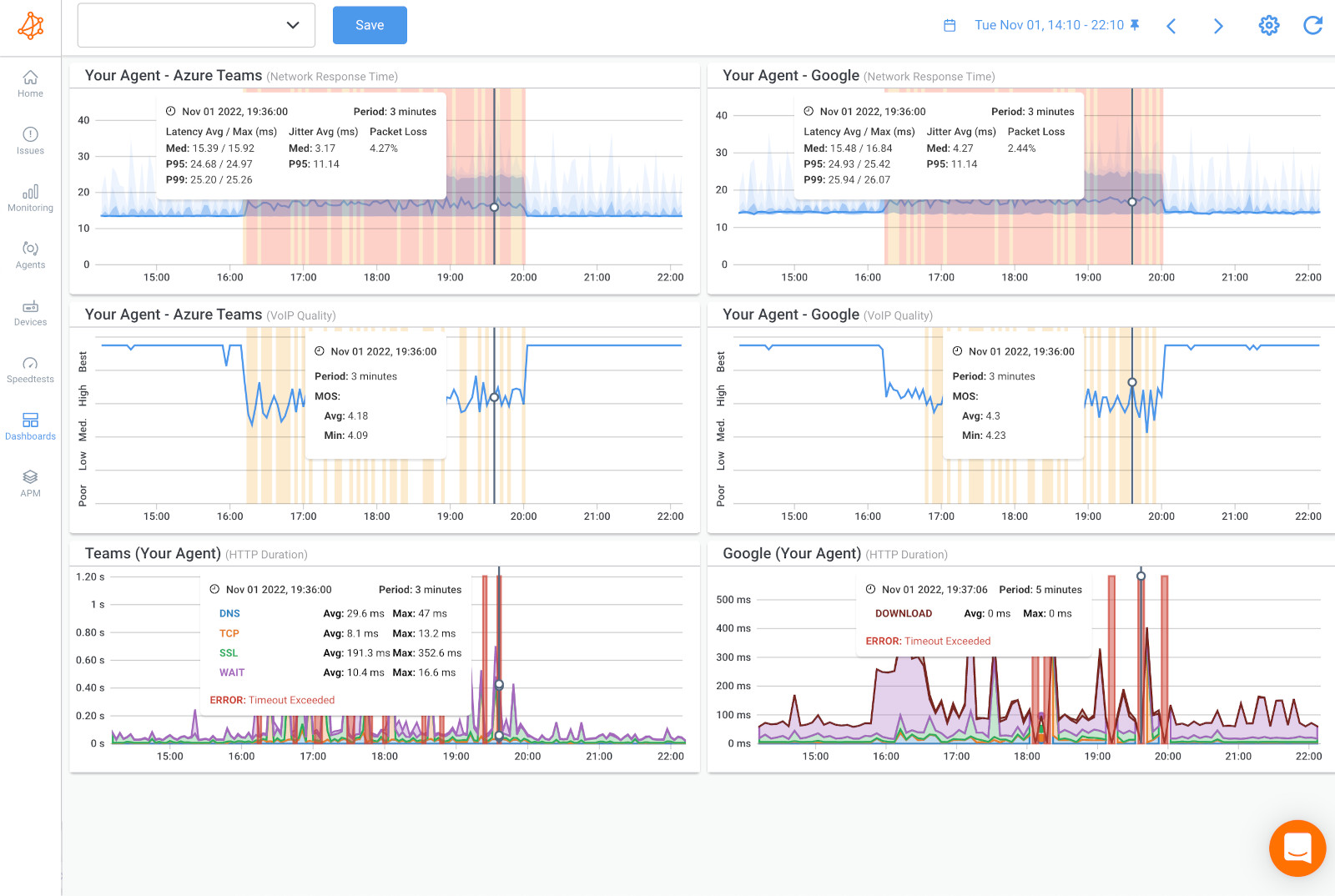
Congratulations on your Azure network monitoring setup! You now have all tools you need to track down and eliminate pesky network issues, keep a watchful eye on your Azure network, and optimize its performance to ensure the clearest cloud connections.
Using the information from Obkio’s app, you’ll be able to identify where Azure network issues are coming from: Your local network, or the Azure network.
If the network issues are coming from your local network, it’s up to you to troubleshoot.
The next steps you take will depend on the network issues you identify using Obkio.
Here are some ways to optimize Azure network performance:
- Implementing proper network architecture: This involves using a well-designed network topology and utilizing features such as virtual networks, subnets, and network security groups.
- Utilizing Azure ExpressRoute: ExpressRoute provides a dedicated, private connection between on-premises infrastructure and Azure data centers, improving network performance and reducing latency.
- Choosing the right virtual machine size: Selecting a virtual machine size that matches your workload requirements can improve network performance and reduce bottlenecks.
- Enabling caching: Azure offers several caching options, including Redis Cache and Azure Cache for Redis, which can improve the performance of web applications and reduce latency.
- Using a content delivery network (CDN): Implementing a CDN, such as Azure CDN, can improve the delivery of content and reduce latency for users located far from the source.
- Monitoring and optimizing network traffic: Continuously monitoring network traffic and identifying and addressing bottlenecks can improve network performance and reduce latency.
By implementing these strategies and leveraging tools like Obkio Network Performance Monitoring, you can optimize your Azure network performance and ensure that your applications and services are operating at peak efficiency.

Congratulations, fellow cloud adventurers! You have successfully completed a deep dive into the world of Azure network monitoring, and now possess the knowledge to keep your cloud connections clear and your network performance optimized.
Remember to stay vigilant and monitor all aspects of your Azure infrastructure, from virtual machines and applications to network devices and traffic. By partnering with a reliable network performance monitoring tool like Obkio, you can detect and resolve issues quickly, ensuring optimal performance and user experience.
So, keep your eyes on the clouds and your feet on the ground, and may your Azure network performance always be sky-high!



























 Obkio Blog
Obkio Blog





